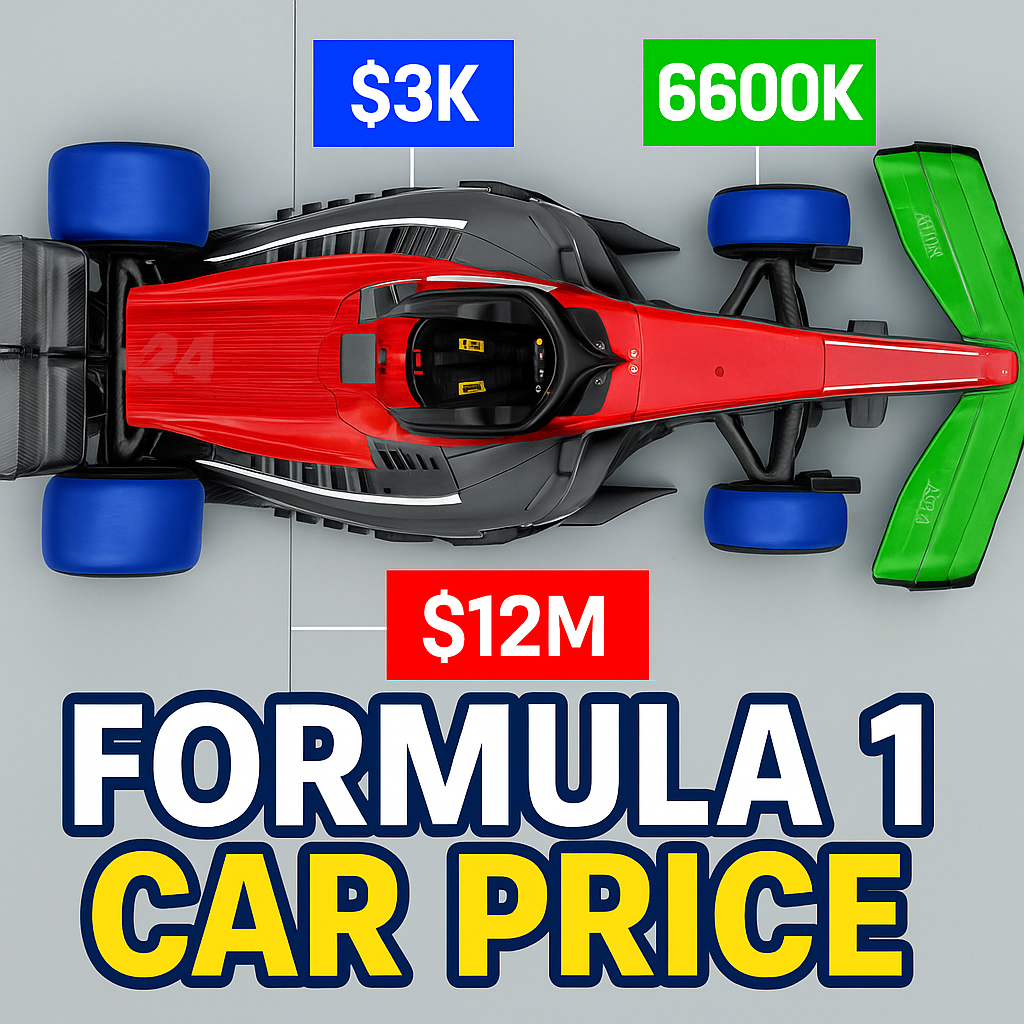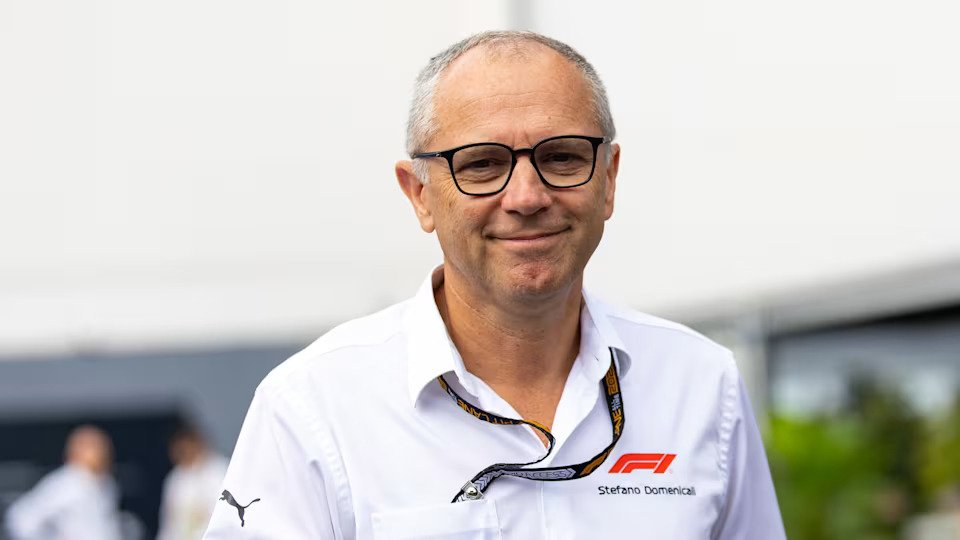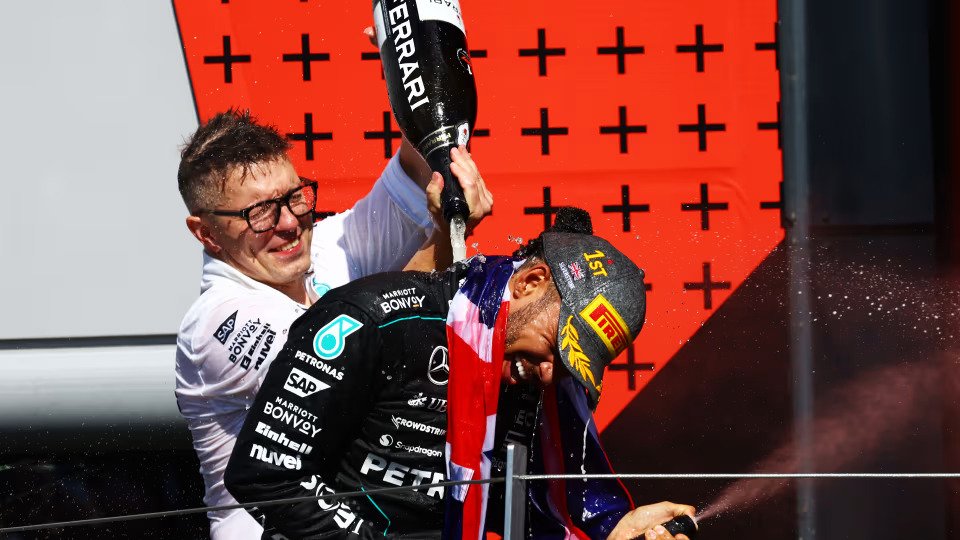Formula 1 Car Price:
Formula 1 cars are the pinnacle of speed, innovation, and luxury in motorsports because of their powerful engines, precise engineering, and state-of-the-art aerodynamics. However, have you ever pondered how much a Formula 1 car costs? To put one of these machines on the track, how much does it actually cost?

1. The Average Formula 1 Car Price in 2025
The typical cost of a Formula 1 car is between $12 million and $20 million as of 2025. That number, however, may differ based on the team, the degree of customization, and the complexity of the technology. Let’s examine the individual components that go into this exorbitant cost in more detail.
2. Breakdown of Formula 1 Car Cost by Components
a. Chassis – $1.5 to $2 million
The carbon fiber monocoque chassis is the central structure of the car. Built to withstand crashes while maintaining rigidity and minimal weight, this component is both vital and expensive.
b. Engine – $10 to $15 million
The hybrid V6 turbocharged engine is the most expensive part of the car. Developed by manufacturers like Mercedes, Ferrari, and Honda, these engines are marvels of modern engineering, featuring energy recovery systems (ERS) and kinetic energy recovery systems (KERS).
c. Gearbox – $500,000
The semi-automatic, paddle-shifted gearbox must be incredibly durable and lightweight. It’s one of the most advanced systems in the car.
d. Steering Wheel – $50,000 to $100,000
A Formula 1 steering wheel isn’t just for turning the car—it’s a computer interface. With over 20 buttons, rotary switches, and a display screen, it allows drivers to adjust brake bias, fuel mix, engine settings, and more.
e. Suspension – $200,000
Built for precision, the suspension system ensures optimal tire contact with the road surface at all times.
f. Tires – $2,700 per set
Each F1 race weekend requires multiple sets of tires, and each set costs around $2,700. Multiply that by a full season, and tire costs alone exceed $150,000 per car.
g. Brakes – $200,000
F1 cars use carbon fiber composite brakes that operate at temperatures above 1,000°C. These systems are key to performance and safety.
h. Aerodynamics (Front & Rear Wings) – $300,000
Aerodynamic parts are vital to controlling downforce and drag. Teams invest millions in R&D to fine-tune these components.
i. Electronics & Control Units – $100,000
The electronic control units (ECUs) gather and process data from hundreds of sensors in real time. They are essential for telemetry and performance analysis.
3. Additional Costs Beyond the Car
Research and Development (R&D): Top F1 teams spend hundreds of millions annually on R&D to stay competitive.
Pit Crew & Maintenance: Specialized pit crews and technical staff add significantly to operational costs.
Logistics & Transportation: Transporting an F1 car and its crew around the world is a costly operation, often exceeding $8 million per season.
4. Budget Cap in Formula 1 (2025 Update)
As of 2025, Formula 1 teams must operate under a budget cap of $135 million per season, excluding certain items like driver salaries and marketing. This cap is designed to create a more level playing field, but the cost of developing and maintaining an F1 car remains extremely high.
5. Are Formula 1 Cars for Sale?
Technically, Formula 1 cars are not sold to the public while they are in active use. However, retired F1 cars can be bought at auctions or through private sales. Prices vary depending on the car’s race history, with some going for over $5 million.
6. Why Are Formula 1 Cars So Expensive?
Several factors drive the high Formula 1 car price:
Cutting-edge technology
Constant innovation
High R&D investment
Handcrafted components
Specialized materials like carbon fiber and titanium
These cars are not just fast—they are mobile laboratories, pushing the boundaries of what’s technically possible.





